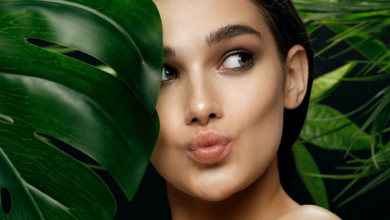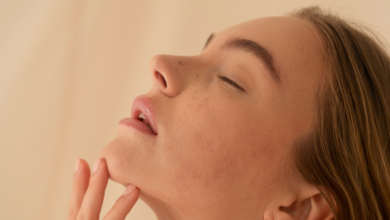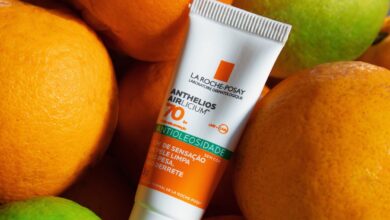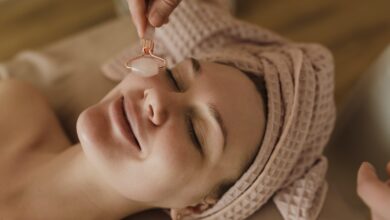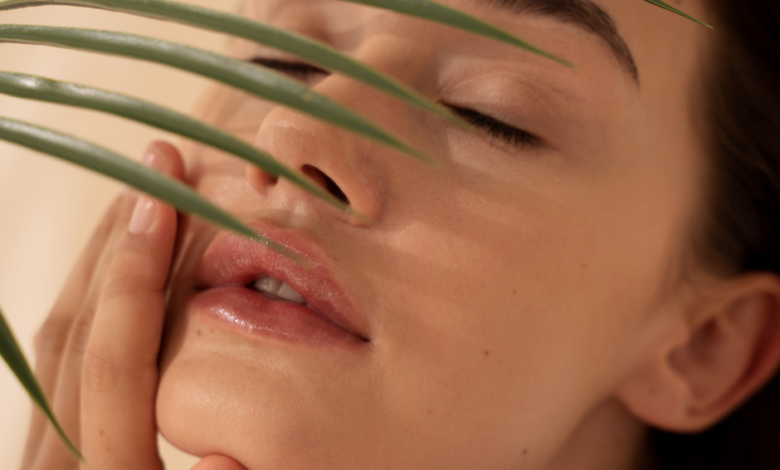
Congratulations on the arrival of your little one! As you embark on this beautiful journey of motherhood, it’s important to pay attention to your postpartum skin care. The aftermath of giving birth brings about numerous changes and challenges that can affect your skin’s health and appearance. From hormonal fluctuations to stretch marks, acne breakouts to dryness, understanding how to navigate these transformations and maintain a healthy skin barrier is essential.
In this article, we will explore the various changes your skin may undergo after childbirth and offer effective solutions to help you maintain radiant, nourished, and glowing skin during this transformative time.
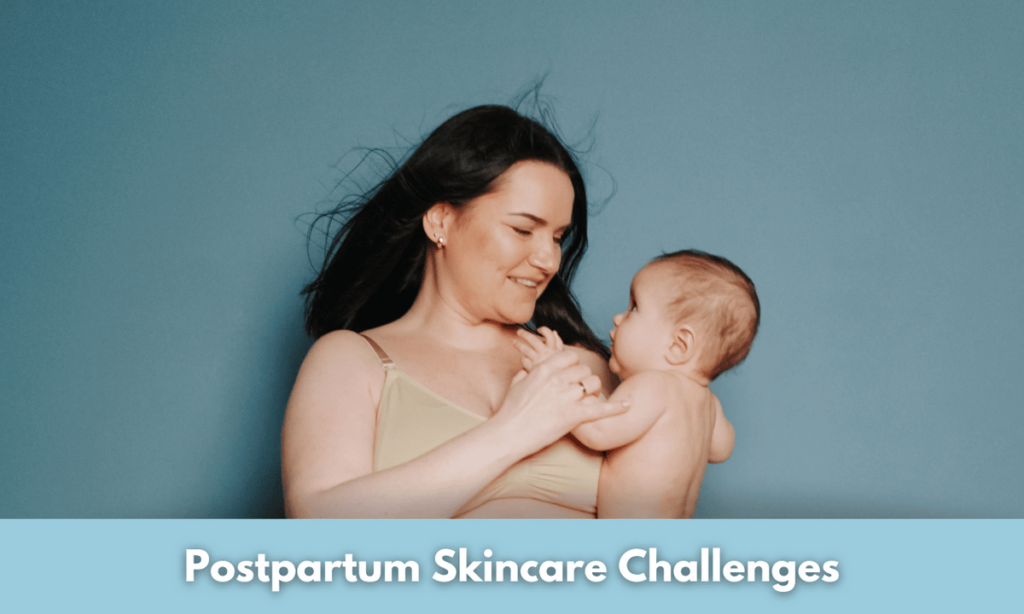
Hormonal changes and their impact on the skin
Hormonal changes during the postpartum period can have a significant impact on the skin. One common change is increased oil production, which can lead to oily and greasy skin. This increase in oil production can also result in frequent acne breakouts. Additionally, hormonal fluctuations can cause hyperpigmentation, which is the darkening of certain areas of the skin. These changes can leave new mothers feeling frustrated and self-conscious about their appearance.
Increased oil production
During pregnancy, hormonal changes occur in the body to support the growing fetus. These changes can lead to an increase in sebum production, the oily substance that keeps our skin lubricated. However, after childbirth, hormone levels fluctuate again, causing an overproduction of sebum. This excess oil can clog the pores, leading to acne breakouts and an overall greasy appearance.
Acne breakouts
The fluctuation in hormones during the postpartum period can trigger acne breakouts. These breakouts can manifest as small, red bumps or even painful cystic acne. The combination of increased oil production and the presence of bacteria on the skin can lead to inflammation and the formation of pimples. Dealing with acne on top of the other changes that come with motherhood can be distressing for new mothers.
Hyperpigmentation
Hyperpigmentation is another common skin concern during the postpartum period. It occurs when certain areas of the skin become darker than the surrounding skin. The increase in hormone levels can stimulate the production of melanin, the pigment responsible for skin color. This can lead to dark patches on the face, typically known as melasma or the “mask of pregnancy.” Hyperpigmentation can make new mothers feel self-conscious and affect their confidence.
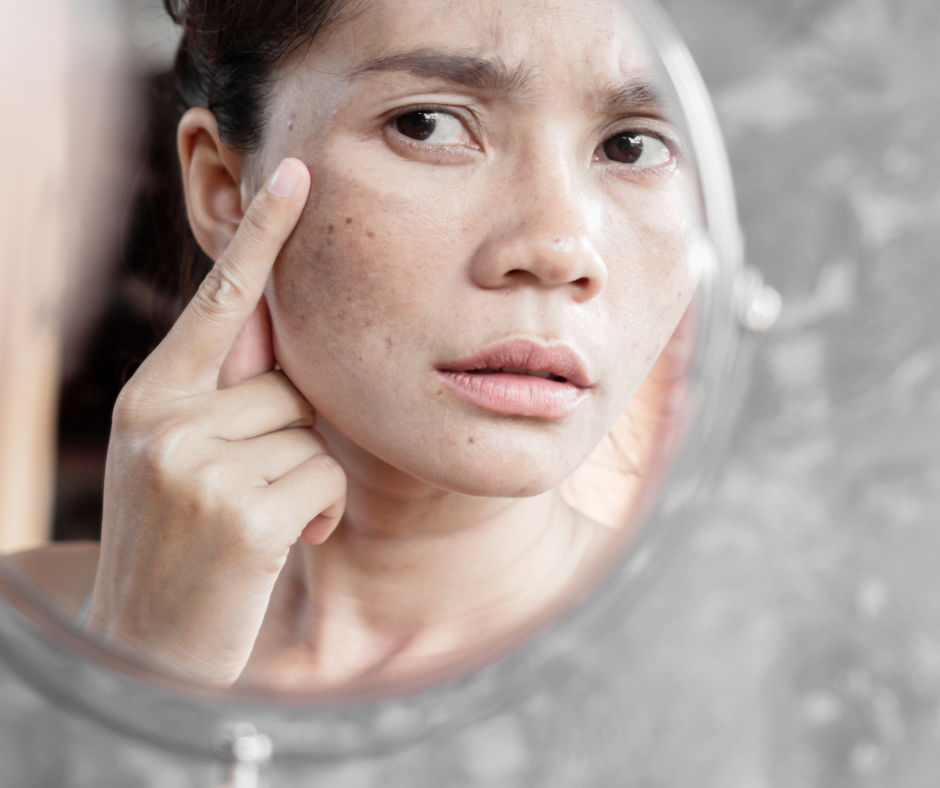
Addressing dry and sensitive skin
Dry and sensitive skin is another common issue that many new mothers experience postpartum. The hormonal changes, along with external factors like weather and stress, can contribute to dryness and sensitivity. However, there are several ways to alleviate these symptoms and restore moisture to the skin.
Moisturize regularly
One of the most important steps in caring for dry and sensitive skin is to moisturize regularly. Choose a moisturizer that is specifically formulated for sensitive skin and free of harsh chemicals and fragrances. Apply the moisturizer to your face and body after bathing or whenever your skin feels dry throughout the day. This will help to replenish moisture and create a protective barrier on the skin.
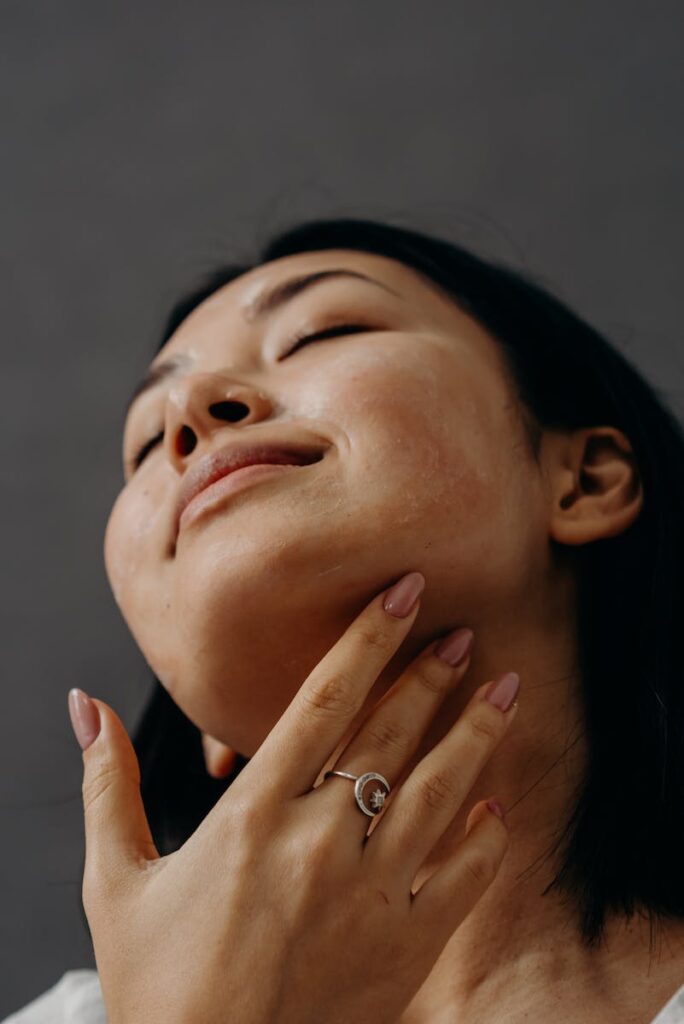
Avoid harsh chemicals and fragrances
When dealing with dry and sensitive skin, it is crucial to avoid using products that contain harsh chemicals and fragrances. These can further irritate and dry out the skin, exacerbating the problem. Opt for gentle and natural products that are designed for sensitive skin. Look for ingredients like aloe vera, chamomile, and hyaluronic acid, which are known for their soothing and hydrating properties.
Use gentle cleansers
Using a gentle cleanser is essential for maintaining the balance of your skin’s natural oils and preventing further irritation. Avoid harsh soaps and cleansers that can strip the skin of its natural moisture. Instead, opt for mild and fragrance-free cleansers that are specifically formulated for sensitive skin. Be sure to cleanse your face and body gently, using lukewarm water, and pat your skin dry with a soft towel afterward.
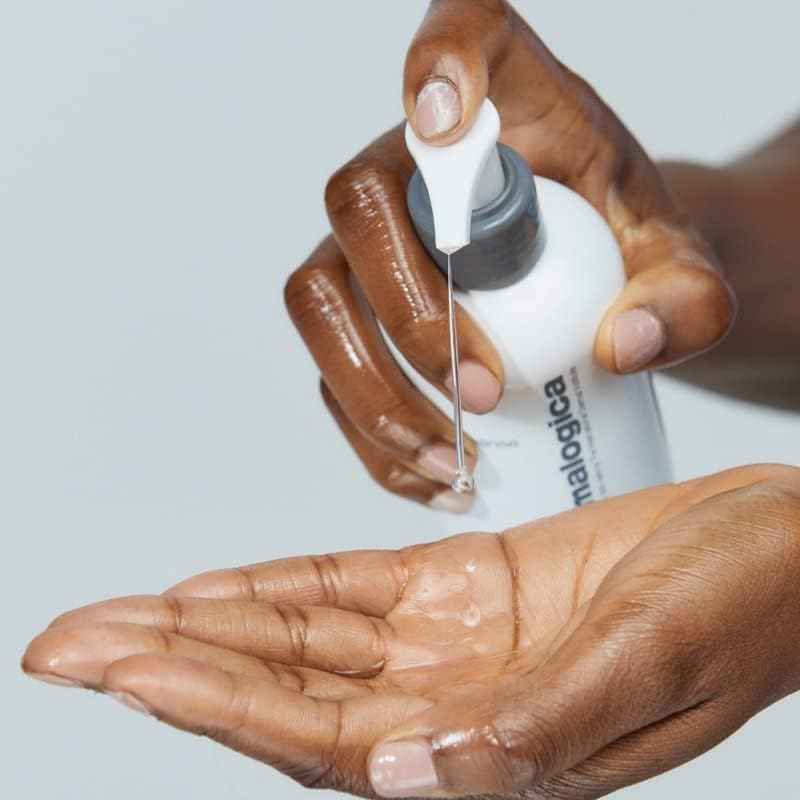
Dealing with postpartum acne
Postpartum acne can be a frustrating and distressing issue for new mothers. However, with the right approach, it can be effectively managed.
Identifying the cause
The first step in dealing with postpartum acne is to identify the underlying cause. Hormonal changes are often the primary culprit, but other factors, such as stress and lack of sleep, can also contribute to acne breakouts. Keeping a diary to track potential triggers, like certain foods or products, can help you pinpoint what is causing your acne.
Safe acne treatments during breastfeeding
It’s important to note that some acne treatments may not be safe for breastfeeding mothers. Certain medications and topical products can be absorbed into the bloodstream and potentially harm the baby. It is essential to consult with your healthcare provider before using any acne treatments while breastfeeding. They can guide you toward safe options that won’t compromise your baby’s health.

Managing stress levels
Stress can worsen acne by triggering hormonal fluctuations and increasing inflammation in the body. As a new mother, it’s crucial to prioritize self-care and find healthy ways to manage stress. Incorporating relaxation techniques such as deep breathing, meditation, or yoga into your daily routine can help reduce stress levels. Additionally, engaging in activities you enjoy, such as reading, listening to music, or spending time with loved ones, can also promote a sense of calm and overall well-being.
Managing stretch marks and skin elasticity
Stretch marks are a common concern for many new mothers. These reddish or purple streaks often appear on the abdomen, breasts, hips, and thighs as a result of the skin stretching during pregnancy. While they may fade over time, there are steps you can take to manage them and improve skin elasticity.
Moisturizing the skin
Regularly moisturizing the affected areas can help improve the appearance of stretch marks and enhance the skin’s elasticity. Look for moisturizers that contain ingredients like cocoa butter, shea butter, or vitamin E, as these have been shown to be useful in reducing the visibility of stretch marks. Apply the moisturizer in gentle, circular motions to promote absorption and stimulate blood flow.
Using topical treatments
There are various topical treatments available that claim to reduce the appearance of stretch marks. These treatments often contain ingredients like retinol, hyaluronic acid, or collagen-boosting peptides. However, it’s crucial to consult with a dermatologist or healthcare provider before using any of these products, especially if you’re breastfeeding. They can recommend safe and effective options based on your individual circumstances.
Exercising and maintaining a healthy weight
Regular exercise can help improve skin elasticity by promoting blood circulation and toning the muscles. Engaging in activities like walking, swimming, or yoga can also enhance overall well-being. Additionally, maintaining a healthy weight can prevent excessive stretching and reduce the likelihood of developing new stretch marks. Remember to consult with your healthcare provider before starting any exercise regimen postpartum.

Caring for postpartum skin discoloration
Postpartum skin discoloration, including dark patches or uneven skin tone, is a common concern for many new mothers. Understanding the causes and taking appropriate measures can help address these discolorations effectively.
Understanding the causes
Postpartum skin discoloration, also known as chloasma or the “mask of pregnancy,” is primarily caused by hormonal changes. These changes can lead to the overproduction of melanin, causing dark patches on the face, abdomen, or other areas of the body. Additionally, sun exposure can exacerbate these discolorations, so it’s essential to protect your skin from harmful UV rays.
Using skin brightening products
Using skin brightening products, such as serums or creams containing ingredients like vitamin C or niacinamide, can help fade postpartum hyperpigmentation. These products work by inhibiting the production of melanin and promoting the turnover of skin cells. However, it’s crucial to consult with a dermatologist before using any new products to ensure they are safe for your specific skin type and condition.
Consulting a dermatologist for severe cases
If the discoloration persists or becomes severe, it is recommended to consult with a dermatologist. They can assess your specific condition and recommend more advanced treatments like chemical peels, microdermabrasion, or laser therapy. These treatments can help to reduce postpartum skin discoloration and restore a more even complexion. However, always discuss potential risks and benefits with your healthcare provider, especially if you’re breastfeeding.
Sun protection during the postpartum period
Protecting your skin from the sun’s harmful rays is vital, especially during the postpartum period when the skin may be more sensitive and prone to discoloration. Incorporating sun protection measures into your daily routine can help prevent further damage and promote overall skin health.
Using sunscreen daily
Make it a habit to apply sunscreen daily, regardless of the weather or your plans for the day. Choose a broad-spectrum sunscreen with a sun protection factor (SPF) of 30 or higher. Look for sunscreens that are specifically formulated for the face and body, as they tend to be less greasy and more suitable for everyday use. Apply a generous amount to all exposed areas of the skin and reapply every two hours, or more often if you are sweating or swimming.
Wearing protective clothing
In addition to sunscreen, wearing protective clothing can provide an extra layer of defense against the sun’s harmful UV rays. Opt for lightweight, long-sleeved shirts, wide-brimmed hats, and sunglasses with UV protection. These items can help shield your skin and eyes from direct sun exposure, reducing the risk of sunburn and skin damage.
Seeking shade during peak hours
To minimize sun exposure and protect your skin, it is advisable to seek shade during the peak hours of UV radiation, typically between 10 a.m. and 4 p.m. If you need to be outdoors during this time, look for shady areas or create your own shade with an umbrella or canopy. Remember, even on cloudy days, a significant amount of UV radiation can still reach the Earth’s surface, so sun protection measures are crucial.
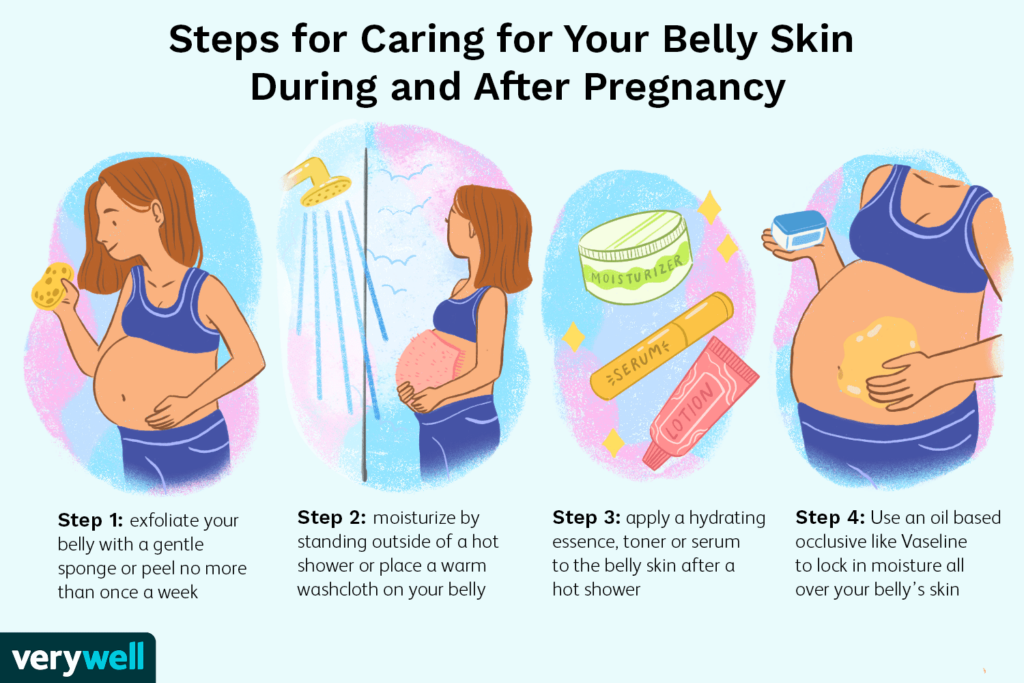
Managing excessive sweating
Excessive sweating, also known as hyperhidrosis, can be a bothersome issue for many postpartum women. This condition can be caused by hormonal changes, increased stress levels, or a side effect of certain medications. While it can be challenging to manage, there are steps you can take to minimize excessive sweating and its impact on your daily life.
Using antiperspirants
Antiperspirants are a common and effective way to manage excessive sweating. Look for antiperspirant products that contain aluminum chloride, as they work by blocking the sweat glands and reducing sweat production. Apply the antiperspirant to clean, dry skin before going to bed, as this allows it to work overnight when the sweat glands are less active. In the morning, you can rinse off any residue and apply a regular deodorant if desired.
Wearing breathable fabrics
Choosing breathable fabrics can help keep you cool and prevent excessive sweating. Opt for natural fibers like cotton or linen, as they allow your skin to breathe and wick away moisture. Avoid synthetic materials that can trap heat and moisture, leading to increased sweating. Loose-fitting clothing can also help improve airflow and prevent sweat from becoming trapped against your skin.
Practicing good hygiene
Maintaining good hygiene is essential when dealing with excessive sweating. Shower daily using a mild soap or body wash to cleanse the skin and prevent bacterial growth. Pay special attention to areas prone to sweating, such as the underarms, groin, and feet. After showering, make sure to thoroughly dry these areas to minimize moisture. You can also consider using absorbent powders or pads to help absorb excess sweat throughout the day.
Addressing hair loss after childbirth
Postpartum hair loss, also known as telogen effluvium, is a common condition that affects many women after giving birth. During pregnancy, hormones cause the hair cycle to shift, resulting in a reduced rate of hair shedding. However, after childbirth, hormone levels return to normal, causing a higher percentage of hair follicles to enter the shedding phase. This increased shedding can be distressing for new mothers, but there are strategies to help manage it.
Understanding postpartum hair loss
It’s important to understand that postpartum hair loss is a temporary condition. In most cases, the hair will eventually return to its normal growth cycle within a few months. However, during this transition period, it’s normal to experience increased shedding and noticeable thinning. It’s crucial to be patient and understand that your hair will likely regain its pre-pregnancy thickness over time.

Taking care of the scalp
Maintaining a healthy scalp is essential for promoting hair growth and reducing breakage. Gently massage your scalp using your fingertips to stimulate blood circulation and promote hair follicle health. Avoid using harsh shampoos or excessive heat styling, as these can damage the hair and scalp. Opt for mild, sulfate-free shampoos and conditioners that are specifically formulated for thinning or fragile hair.
Eating a balanced diet rich in nutrients
A balanced diet is crucial for overall health and can have a positive impact on hair growth. Include a variety of nutrient-rich foods in your meals, such as leafy greens, fruits, lean proteins, and healthy fats. These foods provide essential vitamins and minerals that support hair health, including biotin, iron, zinc, and vitamins A, C, and E. If you’re concerned about your nutrient intake, consider talking to your healthcare provider about incorporating supplements into your diet.

Dealing with periorbital dark circles and puffiness
Periorbital dark circles and puffiness, often referred to as “mom bags,” are a common concern for new mothers. Lack of sleep, hormonal changes, and fluid retention can contribute to the appearance of dark circles and puffiness around the eyes. While these changes are often temporary and improve over time, there are steps you can take to minimize their appearance.
Using cold compresses
Applying cold compresses, such as chilled cucumber slices or cold tea bags, can help reduce puffiness and soothe tired eyes. The cold temperature constricts the blood vessels and reduces swelling around the eyes. Place the compresses over closed eyelids for 10-15 minutes to experience the rejuvenating effects. Incorporating this simple technique into your daily routine can help refresh your appearance and minimize the appearance of dark circles.
Getting enough sleep
Getting enough sleep is vital for overall well-being and can have a significant impact on the appearance of periorbital dark circles and puffiness. Aim for 7-9 hours of quality sleep each night. Establishing a soothing bedtime routine, creating a sleep-friendly environment, and managing stress levels can all contribute to better sleep quality. If possible, take short naps during the day to help alleviate fatigue and support a well-rested appearance.
Using eye creams or serums
Eye creams or serums specifically formulated for dark circles and puffiness can be beneficial in reducing their appearance. Look for products that contain ingredients like caffeine, vitamin K, retinol, or hyaluronic acid, as these can help improve circulation, reduce inflammation, and hydrate the delicate skin around the eyes. Gently apply the product using your ring finger, as it exerts less pressure and is less likely to cause irritation.
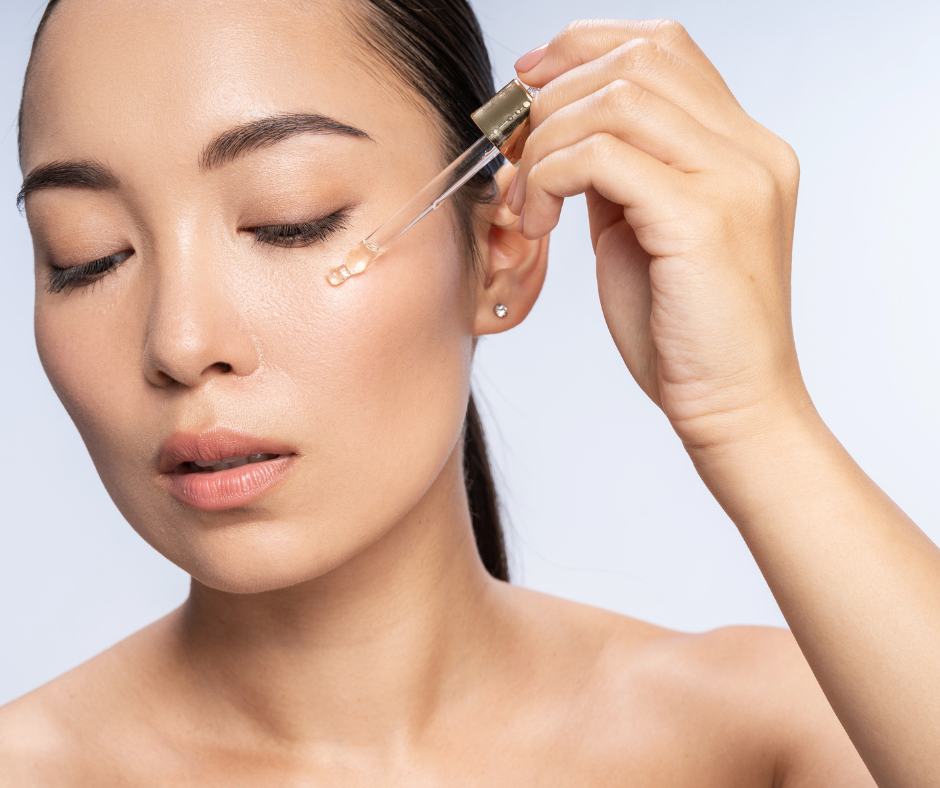
Seeking professional help
While many postpartum skin concerns can be addressed with proper self-care, seeking professional help from a dermatologist or healthcare provider can be beneficial in certain cases. They can provide expert guidance, assess your specific skin condition, and recommend appropriate treatments or interventions.
Consulting a dermatologist
If you’re struggling to manage postpartum skin issues despite implementing preventative measures and home remedies, it may be time to seek professional help. A dermatologist can diagnose any underlying skin conditions and develop a customized treatment plan tailored to your specific needs. They may recommend prescription medications, professional treatments, or further diagnostic tests to address your concerns effectively.
Considering medical treatments
In some cases, medical treatments may be necessary to address severe postpartum skin concerns. These treatments can include chemical peels, microdermabrasion, laser therapy, or injectable fillers. It’s important to discuss potential risks, benefits, and any potential impact on breastfeeding with your dermatologist or healthcare provider. They can help determine the most suitable treatment options based on your unique situation.
Finding support from other postpartum women
Remember, you are not alone in navigating the changes and challenges of postpartum skin care. Connecting with other postpartum women through support groups, online communities, or social media platforms can provide a valuable source of advice, empathy, and reassurance. Sharing experiences and learning from others who have gone through similar experiences can be empowering and help you feel more confident in addressing your postpartum skin concerns.
In conclusion, postpartum skin care involves navigating various hormonal changes and challenges. Understanding the impact of hormonal changes on the skin, addressing dryness and sensitivity, managing postpartum acne, stretch marks, skin discoloration, sun protection, excessive sweating, hair loss, dark circles, and seeking professional help are vital steps in promoting healthy skin during the postpartum period. By implementing appropriate self-care practices and seeking the necessary support, new mothers can regain their confidence and achieve optimal postpartum skin health.

